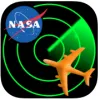Take a look inside 5 images
Sector 33
Pros: Problems connect math to real-world situations, and great support and extensions boost learning potential.
Cons: Each problem starts with the same general radar screen and flight area; more variety would enhance the experience.
Bottom Line: Sector 33 is a fun and unique way to have kids use problem-solving skills and apply math to real-world scenarios.
Sector 33 would make a nice supplement to a math lesson about ratios and proportions. After kids learn about the relationship between distance, rate, and time, have students work in pairs to solve one of the beginner problems. Make sure they review the tutorial first, and challenge groups to earn the highest score. Continue assigning problems and discussing strategies. You can supplement the activities using NASA's Smart Skies website and the "LineUp With Math" lessons, which are designed to support Sector 33 learning goals.
Sector 33 is an air traffic control game that aims to connect math and problem solving to the real world. The game includes four levels of learning with a total of 35 problems, a tutorial, and a handful of useful tips. Tap the Play button, and kids go directly to a problem with a simulated radar screen, which shows the starting positions of the airplanes, their flight paths, and their flight times. The goal is to get all of the planes to merge into a single lane and land within two miles of each other. Kids have to analyze the situation to decide whether they should adjust the planes' flight paths or speeds. Points are awarded for each successful landing. Progress tracking is available from the Levels screen. Kids can access a tutorial and solution hints, as well as links to videos about Sector 33 and air traffic control in the United States and across the world.
Kids must use their math skills and apply the relationship between distance, rate, and time to solve real-world problems. They have to analyze the flight paths of two or more planes and determine how to get the planes to merge into a single path and land within a safe distance from each other. They key is to figure out whether to change a plane's flight path (distance) or rate, and by how much. This is where math skills come into play, and if kids can use the formula distance = rate x time appropriately, they should be able to analyze each problem and find a solution. Additional factors like storms along flight paths add to the challenge and push kids to use their critical thinking and problem-solving skills. Kids get rewarded by earning points and unlocking levels, and levels progress from Trainee to Master. Overall, Sector 33 is a fun way to get kids interested in using math to solve real-world problems and may truly inspire kids who have an interest in an aeronautics-related career.













